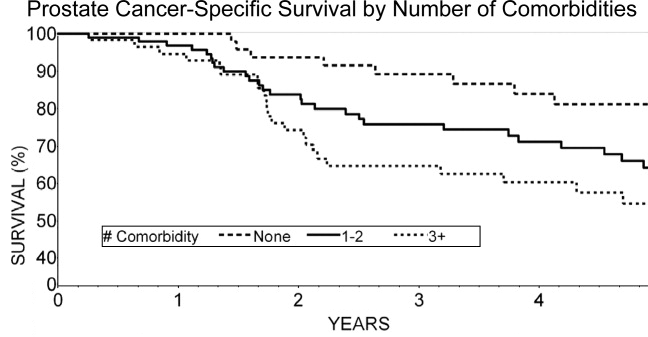|
Initial
treatment patterns and outcome of contemporary prostate cancer
patients with bone metastases at initial presentation
Data from CaPSURE. Charles J. Ryan, Cancer 2007;110:81 |
|
|
| The current study utilized the
CaPSURE disease registry to describe the natural history, initial
treatment, and factors correlated with mortality in patients who
were diagnosed with bony metastatic disease (M+) at the time of
initial presentation. Of 12,005 patients diagnosed between
1990-2004, 284 (2.4%) were diagnosed with M+ disease. After a median
follow-up period of 3.8 years, 107 patients (39%) died. Of those who
died, 68 (64%) died of causes related to prostate cancer, whereas 39
(36%) had died of causes not related to prostate cancer. The
5-year survival of all patients was 71% and the median survival had
not been reached at the time of last follow-up. Approximately
84% of patients received some form of hormonal therapy within 6
months of diagnosis, the use of which increased throughout the study
period. Prostate cancer-specific mortality was found to be
correlated with the presence of comorbid illness, younger age at
diagnosis, and a Gleason score >7 in the primary tumor. CONCLUSIONS. Patients with M+ prostate cancer have a protracted natural history and a median survival that exceeds 5 years. Hormonal therapy is the mainstay for such patients. Comorbid illness, young age at diagnosis, and cancer grade appear to negatively affect the disease-specific survival. |
